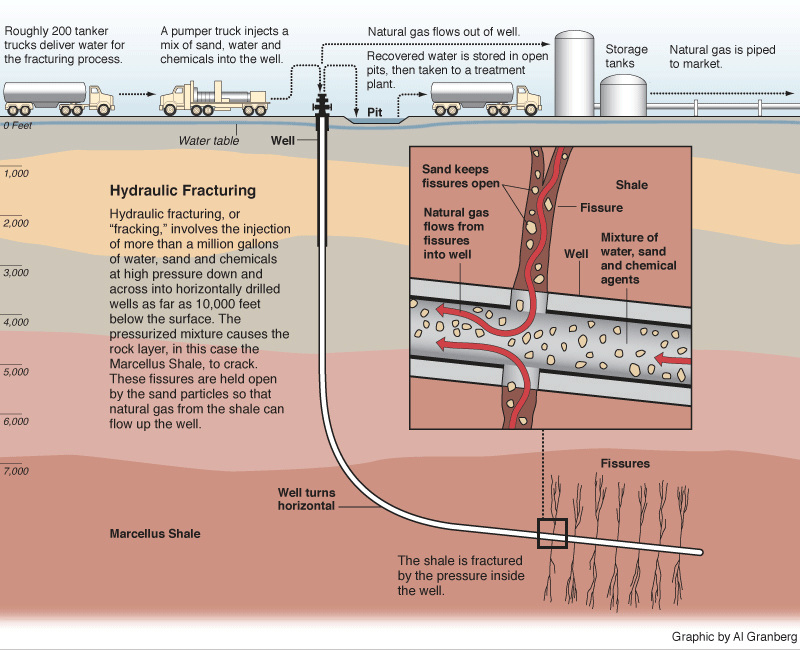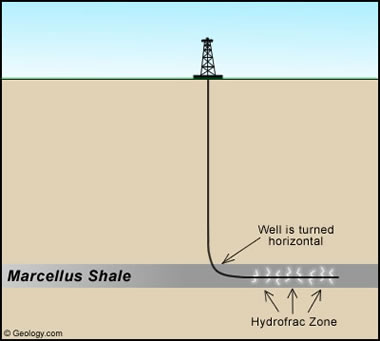State Impact, a reporting project of NPR, defines hydraulic fracturing as a process of extracting natural gas and oil by drilling into the earth’s underground. Natural gas is mostly trapped in coal beds and shale formations, and hydraulic fracturing is used to stimulate these wells and penetrate rock formations. The drilling process utilizes advanced equipment to fracture or crack the ground and the underlying earth layers to ease the flow of natural gas and oil and tease them out.
 |
| Image Source: propublica.org |
This article from Geoscience News and Information illustrates how the combined work of hydraulic fracturing and horizontal drilling has transformed unproductive shales into some of the largest gas fields worldwide. Previously unproductive rock units that are now potent gas and oil fields are the Bakken Formation, The Marcellus Shale, and Barnett Shale. These rock units have been stimulated and turned into viable gas fields through hydraulic fracturing.
 |
| Image Source: geology.com |
The combination of hydraulic fracturing and horizontal drilling can yield significant results, and it usually targets previously thought unprofitable rock formations. The technology has been around since 1940, and has gone through controversies such as its possible hazards to groundwater that people convert to drinking water.
In the past, natural gas used to be flared off in oil fields for its little use. But now, with hydraulic fracturing, it has become a substantial international commodity.
 |
| Image Source: ridley-thomas.lacounty.gov |
Get more information about hydraulic fracturing and other related topics through the ‘Frac Packing Handbook’ by Ali Ghalambor, Ali Syed Ali, and W. David Norman. For more information about the industry, access this Facebook page.
No comments:
Post a Comment